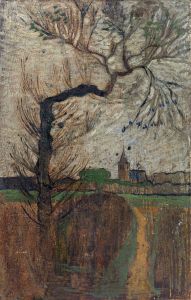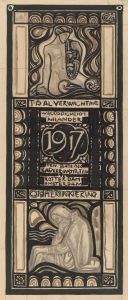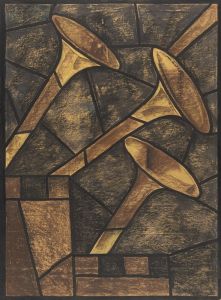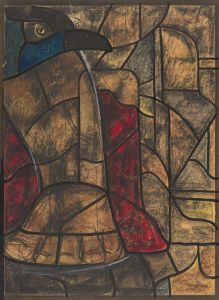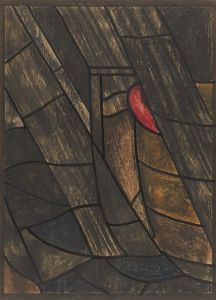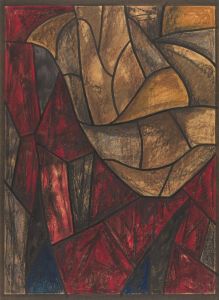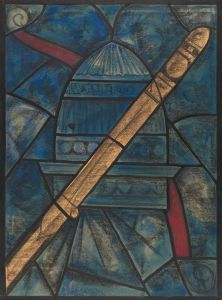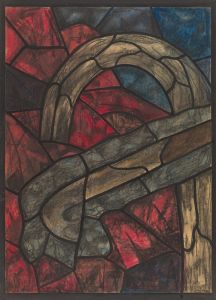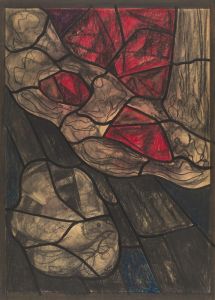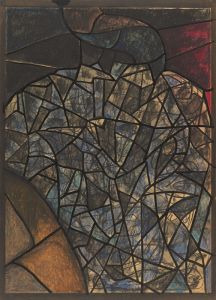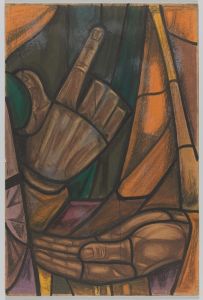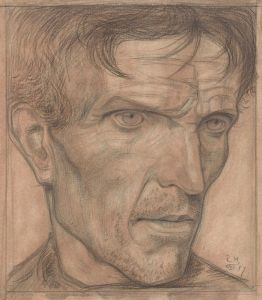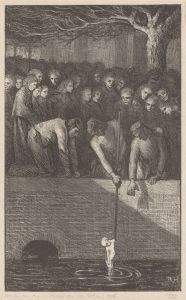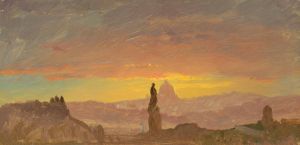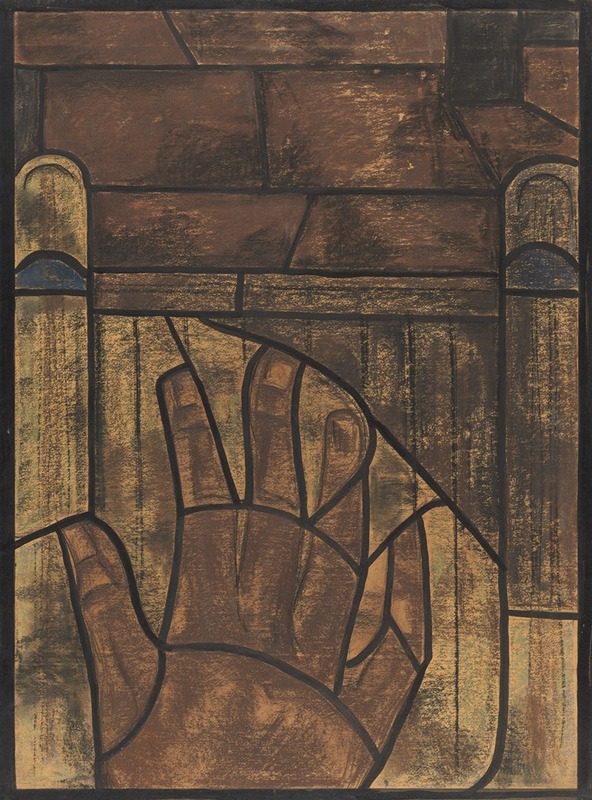
Ontwerp voor raam in het Noordertransept in de Dom te Utrecht 41
A hand-painted replica of Richard Nicolaüs Roland Holst’s masterpiece Ontwerp voor raam in het Noordertransept in de Dom te Utrecht 41, meticulously crafted by professional artists to capture the true essence of the original. Each piece is created with museum-quality canvas and rare mineral pigments, carefully painted by experienced artists with delicate brushstrokes and rich, layered colors to perfectly recreate the texture of the original artwork. Unlike machine-printed reproductions, this hand-painted version brings the painting to life, infused with the artist’s emotions and skill in every stroke. Whether for personal collection or home decoration, it instantly elevates the artistic atmosphere of any space.
Richard Nicolaüs Roland Holst was a prominent Dutch artist known for his contributions to the fields of painting, illustration, and stained glass design. One of his notable works is "Ontwerp voor raam in het Noordertransept in de Dom te Utrecht 41," which translates to "Design for a Window in the North Transept of the Dom in Utrecht 41." This work is a design for a stained glass window intended for the Dom Church, also known as St. Martin's Cathedral, in Utrecht, Netherlands.
Richard Roland Holst was born on December 4, 1868, in Amsterdam, and he became a significant figure in the Dutch art scene during the late 19th and early 20th centuries. He was part of the Amsterdamse Joffers, a group of artists who were associated with the Amsterdam Impressionism movement. Holst's work was characterized by a strong sense of design and a deep interest in symbolism, which was reflected in his stained glass designs.
The Dom Church in Utrecht is one of the most important Gothic churches in the Netherlands. It has a rich history dating back to the Middle Ages and has undergone various phases of construction and restoration over the centuries. The church's architecture and its interior elements, such as stained glass windows, have been the focus of artistic contributions from various renowned artists, including Roland Holst.
Holst's design for the window in the north transept of the Dom Church is an example of his skill in integrating symbolic and religious themes into his work. Stained glass windows in churches often serve not only as decorative elements but also as didactic tools, conveying biblical stories and religious symbolism to the congregation. Holst's design would have been intended to complement the spiritual and aesthetic atmosphere of the church.
While specific details about the imagery and themes of "Ontwerp voor raam in het Noordertransept in de Dom te Utrecht 41" are not extensively documented, it is likely that the design incorporated elements typical of Holst's style. His work often featured intricate patterns, vibrant colors, and a harmonious composition that reflected both the artistic trends of his time and the traditional aspects of stained glass art.
Holst's contributions to stained glass design were part of a broader movement in the late 19th and early 20th centuries that saw a revival of interest in this medium. Artists of this period sought to explore the expressive potential of stained glass, moving beyond its purely decorative function to create works that were both visually striking and rich in meaning.
Richard Roland Holst's impact on Dutch art extended beyond his stained glass designs. He was also a respected teacher and writer, influencing a generation of artists through his teachings and publications. His legacy is evident in the continued appreciation of his work and the recognition of his role in the development of modern Dutch art.
In summary, "Ontwerp voor raam in het Noordertransept in de Dom te Utrecht 41" by Richard Nicolaüs Roland Holst represents an important contribution to the artistic heritage of the Dom Church in Utrecht. It exemplifies Holst's mastery of stained glass design and his ability to infuse his work with symbolic and aesthetic depth, reflecting both his personal style and the broader artistic movements of his time.





